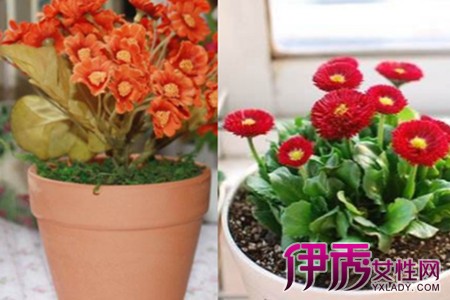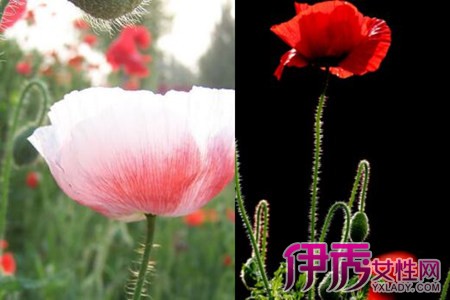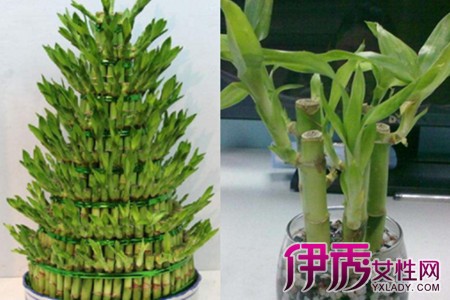Understand the culture methods and matters needing attention of daisies to determine the health of flowers

If you want to raise a kind of flower well, you must understand its growth characteristics. Daisy is a kind of flower that is not suitable for growing environment, so it is difficult to keep it healthy and beautiful without understanding it. With regard to the breeding methods and matters needing attention of daisies, we have summed up some experiences for you, and we will introduce them to our friends one by one below.
Daisy culture watering chapter: although daisies like to be moist, their roots do not like to be soaked in water for a long time. Daisies are easy to rot if the roots are soaked and poorly ventilated. The best way is to see the surface of the soil dry before watering it. Usually, you can spray some water on its leaves with a spray can every day, so as to prevent the leaf tips from withering and yellowing.
Daisy culture temperature: daisies are sunny plants and are not afraid of being exposed to the sun. Even the hottest sun in summer is a delight for daisies. Daisies are more hardy than ordinary flowering flowers, but they are not suitable for sudden drop in temperature. The most direct deformation is leaf wilting.
Daisies cultivation and fertilization: many people think that daisies are domesticated from wild flowers, so they do not need to fertilize, but this idea is wrong. Daisies are wild because of their large living space and sufficient natural nutrients. But after being domesticated, it grows in the flowerpot, and the soil in the flowerpot is limited. There are not enough nutrients in the flowerpot, so be sure to fertilize the daisies regularly. The correct way is to apply fertilizer every half a month, either with flower nutrient solution or traditional manure.
Autumn flower cultivation methods and precautions from summer to autumn, friends who like to plant flowers begin to prepare for a new round of flower planting process. Which flowers are suitable for breeding in autumn? What do you need to pay attention to growing flowers in autumn? Suitable for autumn breeding flowers are: daisy: daisy is a kind of Compositae plants, alias long-lived chrysanthemum, longevity chrysanthemum, originated in Europe, the original species is regarded as tufted weeds, flowering in spring. Daisies are perennial herbs, and the scientific name perennis also means "perennial". Daisies are so popular with Italians that they are recommended as the national flower. Daisies, also known as dried chrysanthemums and white chrysanthemums, can be used as medicinal plants. Daisies have a long history of cultivation, often sowing in autumn for 2-year-old cultivation, plant height of 15-20 cm. Leaves basally fascicled, spatulate. Capitate inflorescences solitary, flowers 3-5 cm in diameter, ligulate flowers striate. There are white, pink and red. Flower words: pure beauty, innocence, peace, hope and "love deep in my heart". Pansy: pansy (scientific name: Viola tricolor L.). It is a common wild flower in Europe and is often cultivated in parks. Tricolor oysters are suitable for open-air planting, regardless of flower beds, gardens and potted plants. Not suitable for growing indoors, because of lack of light, growth will be slow, branches and leaves can not fully thrive, resulting in unable to blossom, after flowering should not be moved into the room, in order to ensure the life of flowers. Willow piercing fish: the willow piercing fish is native to the temperate zone of northern Eurasia, raw sand, hillside grasslands and roadsides. Like light, more cold-resistant, not resistant to extreme heat, Yizhong and other fertile, moist and well-drained soil. Willow through fish branches and leaves, flower shape and color chic, suitable for flower beds and flower border edge material, can also be potted or cut flowers. There are about 100 species in the same genus, including Moroccan willow piercing fish (L.moroccana), curved distance willow piercing fish (L.bipartita) and so on. Violet: perennial herb with oblong or oblanceolate leaves, purplish red flowers, reddish, yellowish, or white, fragrant, slender fruit. For viewing. Violets are native to the Mediterranean coast. At present, it is widely cultivated in the south of China. Biennial or perennial herbaceous flowers, usually sown in the autumn of the first year, blossom in the spring of the following year, 30~60cm in height, the whole plant is covered with gray stellate pilose, the stem is erect, and the base is slightly woody. Leaves broad, long elliptic or oblanceolate, apex obtuse. Racemes terminal and axillary, pedicels stout, flowers with purplish red, light red, yellowish, white and other colors, single flowers can seed, double flowers do not seed, fruit is siliques cylindrical, seeds winged. The flowering period is from December to April and the fruit ripening period is from June to July. Matters needing attention in growing flowers in autumn: first, the light should be sufficient. Some light-loving woody flowers that bloom in summer, such as jasmine, Fusang, Jiuli incense, etc., should still be placed in a sunny place, so that the plants can fully receive light, so that the leaves can better carry out photosynthesis, provide nutrients in time, and promote the maturity of branches in the current year. so that it can survive the winter safely and ensure that flowers and leaves still flourish in the coming year. Potted flowers such as rhododendron, magnolia, cyclamen, poinsettia and crab claw orchid that bloom before and after the Spring Festival should also be placed in a sunny place and receive full sunshine, otherwise the flowering period will be postponed or even will not bloom. General foliage plants are more shady, can give some light properly, but to avoid noon strong light. Second, water and fertilizer should be appropriate. In early autumn, especially in the first and middle of September, the temperature is still high and the transpiration of plants is large. Most flowers should be watered once a day or two, and the amount of water should be controlled and fertilization should be stopped from the middle to late September, so as to avoid rotting roots and growing branches and leaves. Affect overwintering. Some flowers that bloom before and after the Spring Festival, such as cyclamen, orchid, crab claw orchid, rhododendron, etc., have passed the dormant period and began to enter the peak growing season, so they should blossom continuously from autumn to the Spring Festival, and appropriately increase phosphorus and potassium fertilizer. to facilitate flower bud formation and bud flowering. Third, pruning should be reasonable. In addition to flowers that bloom in early spring, most flowers, such as jasmine, crape myrtle and pomegranate, can be pruned in autumn and pruned at the end of autumn and early winter, so that plants can reduce nutrient consumption in winter, promote potted flowers to be strong, and bloom more in the coming year. Remove diseased branches, withered branches, over-dense branches and overgrown branches when pruning, so as to lay a good foundation for potted flowers to survive the winter. Fourth, the prevention and control of diseases and pests should be thorough. Autumn is still the season with high incidence of diseases and insect pests, and plants are vulnerable to shell insects, red spiders, aphids, whitefly and other pests. Diseases include leaf spot, stem rot and so on. Before potted flowers enter the house, these diseases and insect pests must be treated thoroughly and never let them do harm to the house. If no diseases and insect pests are found, they can be sprayed to prevent them. Fifth, breeding should be timely. After the Beginning of Autumn, the temperature dropped, and some biennial grass flowers, such as pansy, carnation, melon and leaf chrysanthemum, hollyhock, etc., were good time to sow seeds. Sowing can be carried out from September to October, and pay attention to spraying water after sowing to keep the soil moist. There are also some woody flowers suitable for cutting in autumn, such as hanging bell crabapple, rose, geranium, jasmine, leaf flower, Phnom Penh, etc., with a higher survival rate in autumn. Perennial flowers with dense growth, such as peony and peony, should be propagated in time. For the bulb flowers that bloom before and after the Spring Festival, such as hyacinth, tulip, Zhu Dinghong, etc., we should pay close attention to the pot. Sixth, the room should be entered in time. The time of entering the house of potted flowers varies according to the flowers. Fusang, poinsettia, begonia, cyclamen, jasmine, colored leaf grass, tortoise back bamboo and other warm flowers and trees should be moved indoors when the temperature is 10 ℃; hanging orchids, asparagus, one-leaf orchids, goose palm wood, rubber trees, etc., should also be moved indoors when the temperature is as low as 5 ℃. The vast majority of flowers should enter the house before Frosts Descent. Potted flowers should pay attention to ventilation indoors, and the doors and windows can be opened for ventilation and heat dissipation when the temperature is high at noon. Taboos and key points of pruning and shaping in soil selection of Family Flowers
One of the most important points of family flower cultivation is the choice of flower soil. What kind of soil is suitable for family flower cultivation? Today, the editor of Huinong Network will not only bring you taboos for the selection of soil for growing flowers, but also talk about the main points of shaping and pruning flowers for families.
In the daily breeding process of family flowers, reasonable pruning and debugging of flowers is necessary, so that flowers will be more beautiful and more pleasing to the eye. Adequate preparation should be made before pruning, including the understanding of flower parts, flower growth characteristics and so on. Pruning is generally divided into heavy cutting, medium cutting, light cutting and coring.
I. key points of family flower shaping and pruning
(1) heavy cutting
Flowers on annual branches such as jasmine, crape myrtle and rose are suitable for re-pruning, while those on biennial branches are taboo. The knife used in pruning should be sharp to ensure that the cut is smooth and prevent rupture, and the bud eyes that grow to the outside should be selected when trimming, so that the branches can be extended evenly, which is not only beautiful in plant shape, but also conducive to ventilation and light transmission.
(2) medium scissors
Potted flowers such as pomegranate, kumquat and wax plum, which have to be cut short to blossom, are suitable for medium scissors. It is necessary to pay equal attention to thinning and cutting, and for annual branches that have already flowered, 2-3 short buds should be left in the stem, so as to facilitate the emergence of lateral branches, and to remove long branches, cross branches and diseased branches.
(3) light scissors
Flowers such as green peach, magnolia and gardenia blooming on 2-year-old branches are suitable for light pruning, and only redundant side branches, diseased branches and top shoots are cut so that the main branches are strong. In addition, in pruning, artificial shaping can be carried out according to personal preferences and plant growth, such as umbrella shape, pagoda shape and so on.
(4) pick the heart
Herbaceous potted flowers such as daisies, calendula and violets should be plucked from the heart and head many times to make their lateral buds grow, and the plants are short, sturdy and beautiful, so as to increase the number of flowers and prolong the flowering time. And after the flowers are shedding, the residual flowers should be cut off in time to promote the rest of the flowers to bloom more vigorously.
Second, the selection of soil for growing flowers should be avoided.
(1) rotten leaf soil
Rotten leaf soil is the topsoil of forest zone, which is made from deciduous leaves of broad-leaved trees after long-term accumulation and maturation. it contains a lot of organic matter, loose and fertile, good air permeability and drainage, weak acidity, and is an excellent loosening agent for heavy clayey soil. it can be used alone to cultivate gentleman orchids, orchids and cyclamen. In autumn and winter, the fallen leaves of broad-leaved trees can be collected by themselves (such as poplar, willow, elm, locust, etc.), mixed with garden soil for 1-2 years, and then sifted and used when the fallen leaves are fully rotten. Generally, rotten leaf soil is an excellent pot soil, and it can also be mixed with other substrates. It is suitable for sowing, transplanting seedlings and cultivating many kinds of common flowers.
(2) pine needle soil
Pine needle soil is a humus formed by years of decay of the fallen leaves of pine trees in mountain forests. Pine needle soil is grayish brown, loose and fertile, good air permeability and drainage, strong acid reaction, suitable for rhododendron, gardenia, camellia and other flowers.
(3) Peat soil
Peat soil, also known as black soil and peat, is carbonized by the plant remains of low temperature and wetlands through the action of peat moss for thousands of years. Peat soil is soft and loose, free of pathogen spores and harmful eggs, good drainage and air permeability, strong ability of fertilizer and water storage, weak acid reaction, so it is a good potted soil and cutting medium. Brown peat is often used to prepare nutritious soil in the north, and it is more suitable to use peat soil to cultivate acid-loving flowers such as orchid, camellia, sweet-scented osmanthus, magnolia and so on.
(4) Pond mud
Pond mud, also known as river mud, is the sedimentary soil of the river bottom pond, rich in organic matter, black, neutral or slightly alkaline. Generally, the silt from ponds or lakes is harvested in autumn and winter. After drying, freezing and weathering, it can be the best soil for cultivating aquatic flowers. After drying and crushing, it is mixed with coarse sand, husk ash or other light and loose soil, which can be used for the planting of foliage flowers.
(5) turf soil
In natural pastures or grasslands, the turf on the surface of 10cm is dug up, accumulated layer upon layer, and then matured for a year or more, sifted to remove stones, grass roots, etc. Turf soil has sufficient nutrients and weak acid reaction, so it can be planted with rose, carnation, Dali flower and so on.
(6) Marsh soil
After the marsh is dry, the surface soil is a good raw material for basin soil. Swamp soil is rich in humus, long-lasting fertility and acidic. But it is easy to harden and crack after drying, so it should be mixed with coarse sand. The nutritious soil for flower cultivation must choose nutritious ingredients and avoid contaminated soil.
These are all the contents that the editor has sorted out for the flower friends today. Welcome the majority of flower farmers who are in need to come to Huinong Network to learn!
- Prev

How to grow your own beautiful flowers.
Poppy is a kind of succulent plant, because its name is very poetic, so it is loved by everyone. However, many people have found that it is very difficult to reproduce Yu Mei. Transplanting and cutting off the head will not survive. Therefore, today we will teach you how to reproduce Yu Mei.
- Next

Learn potted bamboo farming methods to make the home more cultural atmosphere
The poem has a cloud: It is better to eat without meat than live without bamboo. Through this poem, we can know how much people love bamboo from ancient times to the present. Now many people want to know how to raise potted bamboo bought home. Today we will talk about how to raise potted bamboo.
Related
- Fuxing push coffee new agricultural production and marketing class: lack of small-scale processing plants
- Jujube rice field leisure farm deep ploughing Yilan for five years to create a space for organic food and play
- Nongyu Farm-A trial of organic papaya for brave women with advanced technology
- Four points for attention in the prevention and control of diseases and insect pests of edible fungi
- How to add nutrient solution to Edible Fungi
- Is there any good way to control edible fungus mites?
- Open Inoculation Technology of Edible Fungi
- Is there any clever way to use fertilizer for edible fungus in winter?
- What agents are used to kill the pathogens of edible fungi in the mushroom shed?
- Rapid drying of Edible Fungi

